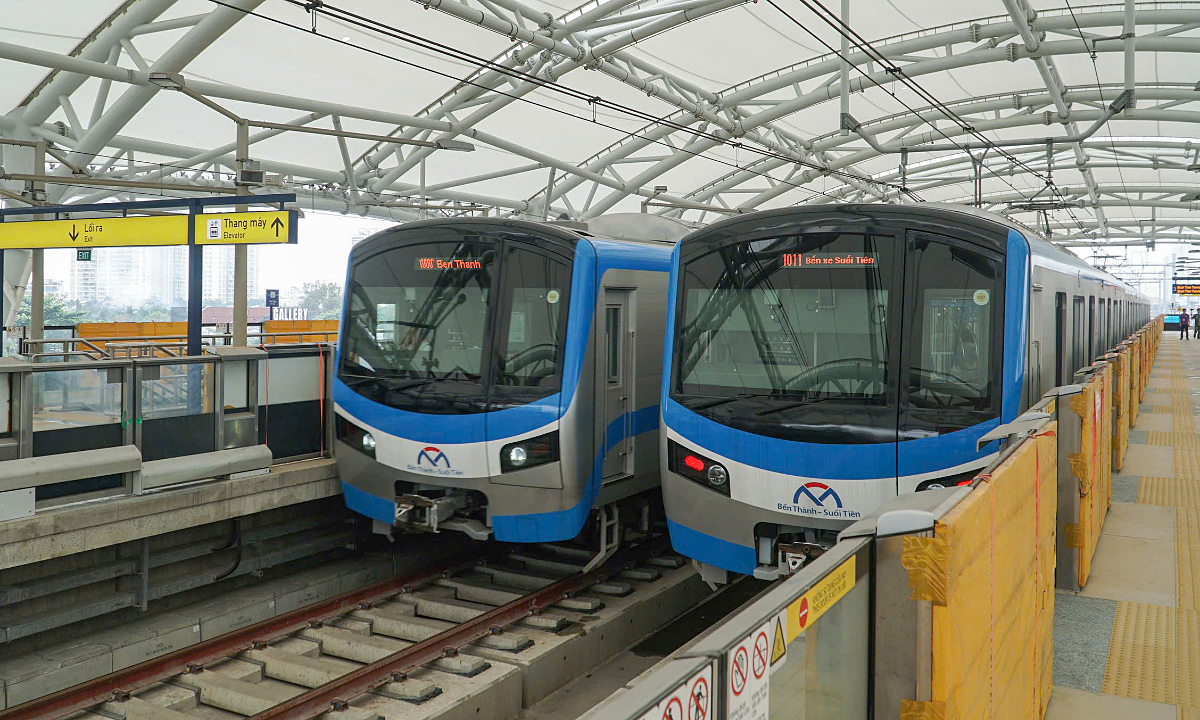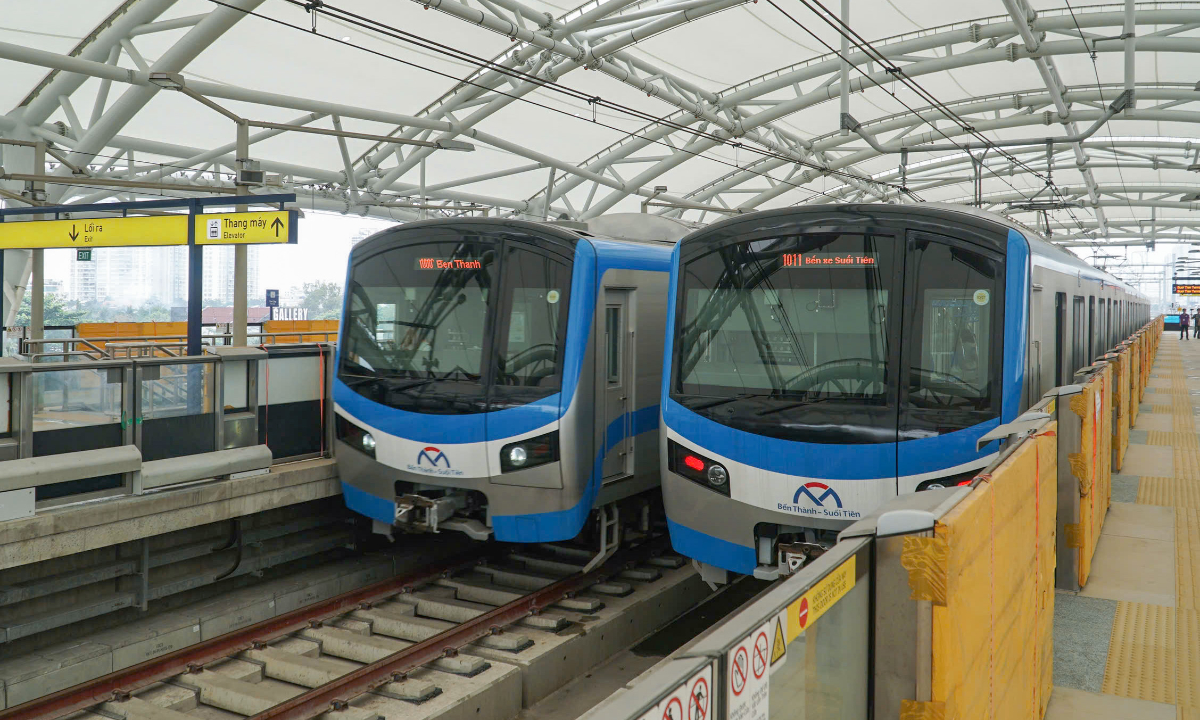
Several large corporations have suggested constructing urban rail lines in Ho Chi Minh City, aiding the city in developing an extensive metro network exceeding 500 kilometers within the coming twenty years.
Dai Dung Corporation, Construction Corporation No. 1 Joint Stock Company (CC1), and Hoa Phat Group have established a joint venture named DCH. They have suggested to the HCM City People's Committee that they be permitted to take part in local urban rail projects with their role being designated as the EPC (engineering, procurement, and construction) general contractor.

|
|
The trains run on the Ben Thanh – Suoi Tien Metro Line in Ho Chi Minh City starting from December 2024. Image courtesy of VnExpress/Quynh Tran. |
Consequently, the DCH aims to investigate and fund three primary railway routes — Metro Line No. 2 (Ben Thanh – Tham Luong), the Thu Thiem – Long Thanh rail link, and the Binh Duong New City – Suoi Tien corridor.
Earlier, Vingroup presented a proposition to the municipal People's Committee aiming to construct a metro line priced at approximately VND102.37 trillion ($4.09 billion). This proposed line would link the city center with Can Gio Island District. With a length of 48.5 kilometers, this route is anticipated to achieve a top speed of up to 250 km per hour—twice as fast as current projects—and could potentially be finished within only two years.
As per the city’s Department of Construction, Vingroup proposed investment In the format of a public-private partnership (PPP), after gaining endorsement from the city authorities, they are accelerating the preparation of investment documents and a preliminary feasibility study report. Should all processes be concluded ahead of schedule, construction could commence as soon as early 2026. Therefore, under optimal circumstances, HCMC will possess its inaugural urban rail line fully executed by a private entity by 2028.
Nguyen Van Duoc, chairman of the municipal People's Committee, has disclosed that besides Vingroup, both Gamuda Group and Vietjet have shown interest and registered their intent to develop various routes. This includes connections from the city center to the airport, as well as Metro Line No. 2.
As outlined in Ho Chi Minh City’s strategic development blueprint from 2021 to 2030, extending towards the long-term objective of 2050, the municipality plans to construct twelve subway lines spanning over 600 kilometers. These lines aim to link Tan Son Nhat Airport, metropolitan zones, peripheral regions, and adjacent provinces. The target is to finish construction on seven out of these twelve lines—totaling approximately 355 kilometers—by 2035 at an estimated cost of around $40.2 billion USD.
Professor Dr. Vo Xuan Vinh, who leads the Institute of Business Research at the University of Economics Ho Chi Minh City, mentioned that following the issuance of Resolution 68 by the Politburo regarding private sector growth, private companies have become increasingly enthusiastic about undertaking major initiatives and are prepared to take on risks.
Vinh noted that due to significant investments and lengthy periods required for capital recuperation, previous urban rail projects in both Ho Chi Minh City and Hanoi primarily relied on official development assistance (ODA) funding.
On this occasion, when major Vietnamese corporations get involved in such initiatives, significant advancements are bound to occur. They will employ strategies to secure funding and expedite project execution to maintain high standards and efficiency. Consequently, the city stands to gain from the rapid development of an efficient urban rail system that is both affordable and well-built, as highlighted by him.
Regarding the attraction of private investment for urban railway initiatives, Dr. Nguyen Quoc Hien, who serves as the deputy chief of the HCMC Management Authority for Urban Railways, mentioned that several Public-Private Partnership (PPP) ventures in Hong Kong (China), mainland China, and South Korea typically follow models such as Build-Transfer-Operate (BTO), Build-Transfer-Lease (BTL), or Build-Lease-Transfer (BLT).
The resolution passed by the National Assembly regarding the trial implementation of certain specialized mechanisms and policies for developing urban rail systems in both Hanoi and Ho Chi Minh City did not address these types of investments. Consequently, additional legislative pathways must be established to encourage private companies to enter the urban rail sector, according to Hien.
Post a Comment